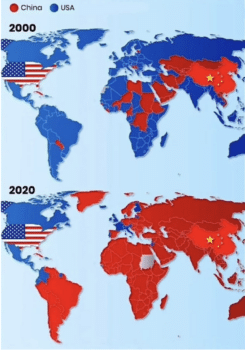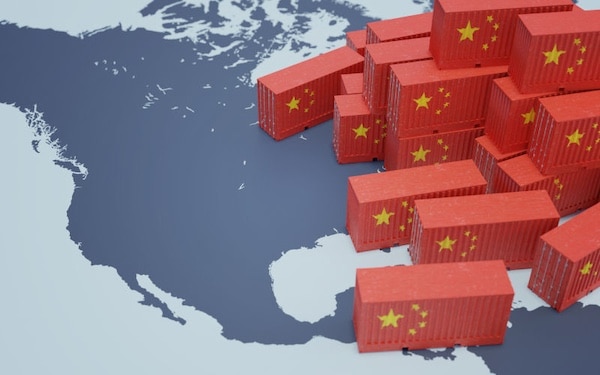
Supplied / Source: The Pioneer (The Economist, IMF Direction of Trade Statistics)
In the late 1970s, I spent some months at Stanford University working on a new book. It was subsequently published under the title China’s Global Role: An Analysis of Peking’s National Power Capabilities in the Context of an Evolving International System.
I argued that China was not a great power. Its population was the largest in the world. Its land area made it number 3. But its economy, its science and technology, its financial resources, and more made it a second level power and essentially a Third World country.
Colleagues agreed and I won a book award for my efforts.
Meanwhile, in 1976, China’s revered leader, Mao Zedong, died. After a hiatus of little over two years Deng Xiaoping (whom Mao had labelled a “capitalist roader” and purged) returned to the top leadership and quickly became its number one.
Deng declared China had failed to become a world power. Its economy had recovered after World War II plus a civil war that followed ending in 1949. But after the mid-1950s China did not perform as well as the average Third World country.
Deng blamed Mao’s radical egalitarian communism and its isolation from all but the other communist nations of the world. He performed “radical surgery” in adopting a free market, incentives, and foreign trade while paring the authority of the Communist Party over the economy.
Under Deng, China essentially adopted a capitalist system. Its economy boomed as a result. In fact, its gross domestic product expanded at what economists called a miracle rate and it became the only large country in the world to do so well.
In 2001, China joined the World Trade Organisations to formalise its reforms and take advantage of specialising in products it could export and thereby earn foreign exchange and gain global influence.
The year 2008 was a turning point. The world, including the United States, owning the top global economy, experienced a recession. China did not. Further, President Obama oversaw what was almost America’s worst recovery ever.
In 2009, China became the world’s largest exporting country. In 2013, it became the planet’s biggest trading country, passing the United States. In 2014, China’s gross national product made it number one worldwide if calculated in purchasing power parity (a metric used by a host of international organisations). In 2015, China’s spending on research and development matched the United States. In 2016, China registered more patents than the U.S.
Meanwhile, China became number one in the world in foreign exchange. It passed the U.S. in auto production. It bested American in steel production by several fold. It was graduating eight or nine-fold the number of graduates in STEM (science, technology, engineering, and medicine).
In the past few years China overtook the United States in artificial intelligence, quantum physics, robotics (with more than half of the world’s robots working in factories), and much more. This predicted China would soon best the U.S. in military capabilities.
As noted in the chart above, China has far surpassed the United States to become the world’s foremost trading nation. In 2023, China was the top trading partner of 120 countries. (There are reportedly 206 countries in the world, 193 in the United Nations).
This gives China enhanced image. It facilitates its diplomacy and its media reach. It alone makes it a large power.
But it does more than that because China’s trade has been favourable (meaning it exports more than it imports), giving China a major source of foreign exchange. This, plus China’s high saving rate and less expensive government, enables China to grow its military budget, spend more on R&D, and provide vast economic assistance to friendly nations.
(Incidentally, China’s Belt and Road Initiative has passed $1 trillion in giving. Washington’s largest project ever was the rebuilding Europe after World War II, which amounted to just over 100 billion in today’s dollars).
The U.S. concurrently faced a huge debt. Paying the interest on it means increasing the defence budget, spending more on research, and giving more foreign aid has become difficult to impossible.
I do not apologise for saying back then that China was not a leading country in terms of national power capabilities. I was not wrong. China made record speed to change that.
Some American leaders, not to mention, many pundits, warn that China will soon pass the U.S. to become the world’s number one power.
Some say it is already too late; China is number one.
John F. Copper is the Stanley J. Buckman Professor (emeritus) of International Studies at Rhodes College in Memphis, Tennessee. He is the author of more than thirty-five books on China, Taiwan, and U.S. Asia policy.

